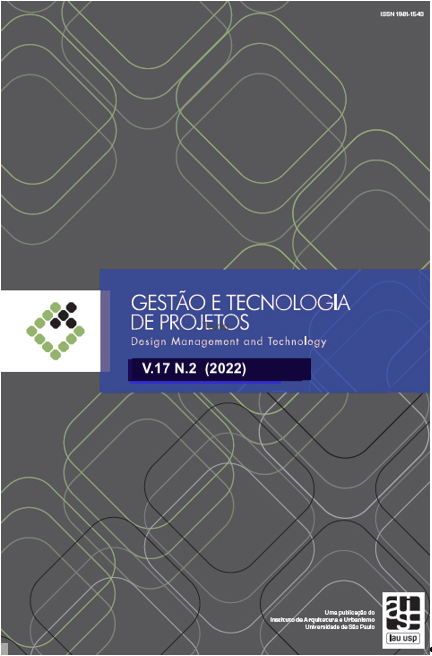Photogrammetry and digital catalogs of sculptures and other urban landmarks: resources for museum cyberculture
DOI:
https://doi.org/10.11606/gtp.v17i2.175164Keywords:
Cultural heritage, Digital catalog, Structure from Motion, 3D printingAbstract
his article addresses aspects of a digital collection and, afterwards, a digital catalog of sculptures and other landmarks from the city of Belo Horizonte, Minas Gerais, Brazil. It highlights as central methods the technology, Structure from Motion – SfM, used to obtain the geometric models, their availability in digital media for the fruition of these cultural goods, the constitution of a library for 3D printing of replicas, the making of a catalog for the organization, communication and exhibition of the constituted collection. The analyzed actions are in the context of the extension project Monumento Digital 120 and, subsequently, in the project Marcos Urbanos: Acervo Digital de Monumentos de Belo Horizonte. The objective of this article is to report on the exploration of such computational resources for the promotion of cultural heritage, stimulating discussions and favoring the emergence of new projects highlighting elements of culture in the digital sphere.
Downloads
References
ABRANTES, Andreza Rigo. Tecnologias digitais como instrumentos de preservação do patrimônio urbano edificado. Instituto do Patrimônio Histórico e Artístico Nacional. Rio de Janeiro, 2014.
AMORIM, Arivaldo Leão. Patrimônio Virtual e História Digital: essência e representação. A Documentação Digital do Patrimônio Construído: possibilidades e desafios. Encontro Nacional da Associação Nacional de Pesquisa e Pós-Graduação em Arquitetura e Urbanismo, v. 1, p. 1-25, Rio de Janeiro: ANPARQ, 2010.
CANUTO, Cristiane Lopes; DE MOURA, Larissa Ribeiro; SALGADO, Mônica Santos. Tecnologias digitais e preservação do patrimônio arquitetônico: explorando alternativas. PARC Pesquisa em Arquitetura e Construção, v. 7, n. 4, p. 252-264, 2016. doi:http://dx.doi.org/10.20396/parc.v7i4.8647456.
DODEBEI, Vera Lucia Doyle Louzada de et al. Digitalização do patrimônio e organização do conhecimento. VIII ENANCIB – Encontro Nacional de Pesquisa em Ciência da Informação. Salvador, 2007.
ENGLAND, Historic. Photogrammetric applications for cultural heritage. Guidance for Good Practice. Swindon. Historic England, 2017.
GROETELAARS, Natalie Johanna. Um estudo da fotogrametria digital na documentação de formas arquitetônicas e urbanas. Universidade Federal da Bahia. Salvador, 2004.
KELLEY, Kate; WOOD, Rachel; WOOD, Rachel KL (Ed.). Digital Imaging of Artefacts: Developments in Methods and Aims. Archaeopress Publishing Limited, 2018.
MAGALHÃES, L., CARVALHO, J. Digitalização Tridimensional de Elementos Escultóricos de Espaços Públicos de Belo Horizonte. Anais Do Encontro Internacional Arquimemória 5 sobre Preservação do Patrimônio Edificado, Salvador, 2017.
MARCOS URBANOS. [site] marcosurbanos. c2017. Página inicial. Disponívem em: . Acesso em: 25 de setembro de 2020.
MELLO, Janaina Cardoso. Museus e ciberespaço: novas linguagens da comunicação na era digital. Cultura Histórica & Patrimônio, v. 1, n. 2, p. 6-29, 2013.
MONUMENTO DIGITAL 120. Sketchfab: Monumento Digital 120. c2020. Página Inicial. Disponível em: . Acesso em: 25 de setembro de 2020.
OLIVEIRA, Péricles, A. M. Monumentos de Belo Horizonte – Minas Gerais. 2008.
MEDINA, Simone da Silva Soria. Análise de produtos fotogramétricos para cadastramento de monumentos arquitetônicos. Universidade Federal do Paraná. Curitiba, 2002.
Downloads
Published
Issue
Section
License
Copyright (c) 2022 Leandro dos Santos Magalhães, Renato Cesar Ferreira de Souza

This work is licensed under a Creative Commons Attribution-NonCommercial-NoDerivatives 4.0 International License.
Copyright Notice
Authors who publish in this journal agree to the following terms:
- Authors retain the copyright and grant the journal the right of first publication, with the article simultaneously licensed under the Creative Commons Attribution License BY NC ND, which allows the sharing of article with acknowledgment of authorship and initial publication in this journal.
- Authors are authorized to take additional contracts separately, for non-exclusive distribution of version of the article published in this journal (e.g. publish in institutional repository or as a book chapter), with acknowledgment of authorship and initial publication in this journal.
- Authors are allowed and encouraged to publish and distribute their research work online (e.g. in institutional repositories or on their personal page) at any point before or during the editorial process, as this can generate productive changes, as well as increase the impact and the citation of published article (See O Efeito do Acesso Livre).



